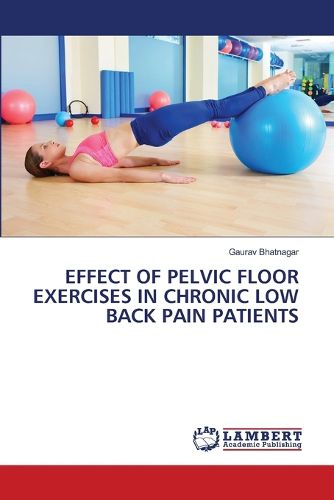Readings Newsletter
Become a Readings Member to make your shopping experience even easier.
Sign in or sign up for free!
You’re not far away from qualifying for FREE standard shipping within Australia
You’ve qualified for FREE standard shipping within Australia
The cart is loading…






This title is printed to order. This book may have been self-published. If so, we cannot guarantee the quality of the content. In the main most books will have gone through the editing process however some may not. We therefore suggest that you be aware of this before ordering this book. If in doubt check either the author or publisher’s details as we are unable to accept any returns unless they are faulty. Please contact us if you have any questions.
The pelvic floor is an important component of the core stabilizing muscles, but many physical therapists and patients with low back pain neglect to train pelvic floor muscles. In addition, there is little evidence that combined routine treatment (Ultrasound or short wave diathermy and lumbar strengthening exercises) and pelvic floor muscle exercise offers any advantage over routine treatment alone. PFM have also an important role in proper muscular activation for lumbar stabilization. However, there is very little evidence was yet found to assess the function of PFM in patients with LBP or to evaluate the effect of PFM exercises in the treatment of such patients. Those studies investigating the function of PFM in healthy subjects or in incontinent women suffered from some methodological flaws such as small sample size, heterogeneous sample, lack of a standardized and valid procedure, lack of a defined inclusion and exclusion criteria, testing different muscles at different positions, etc. Hence the need for present study is to find out whether PFM exercises have any additive effect when given along with the conventional regimen in treatment of patients with chronic LBP.
$9.00 standard shipping within Australia
FREE standard shipping within Australia for orders over $100.00
Express & International shipping calculated at checkout
This title is printed to order. This book may have been self-published. If so, we cannot guarantee the quality of the content. In the main most books will have gone through the editing process however some may not. We therefore suggest that you be aware of this before ordering this book. If in doubt check either the author or publisher’s details as we are unable to accept any returns unless they are faulty. Please contact us if you have any questions.
The pelvic floor is an important component of the core stabilizing muscles, but many physical therapists and patients with low back pain neglect to train pelvic floor muscles. In addition, there is little evidence that combined routine treatment (Ultrasound or short wave diathermy and lumbar strengthening exercises) and pelvic floor muscle exercise offers any advantage over routine treatment alone. PFM have also an important role in proper muscular activation for lumbar stabilization. However, there is very little evidence was yet found to assess the function of PFM in patients with LBP or to evaluate the effect of PFM exercises in the treatment of such patients. Those studies investigating the function of PFM in healthy subjects or in incontinent women suffered from some methodological flaws such as small sample size, heterogeneous sample, lack of a standardized and valid procedure, lack of a defined inclusion and exclusion criteria, testing different muscles at different positions, etc. Hence the need for present study is to find out whether PFM exercises have any additive effect when given along with the conventional regimen in treatment of patients with chronic LBP.